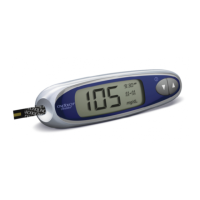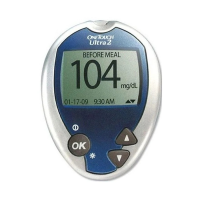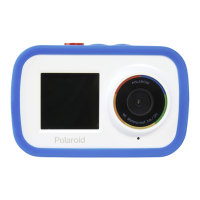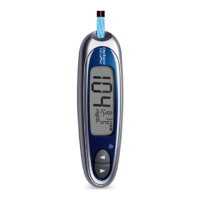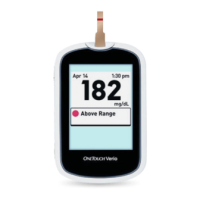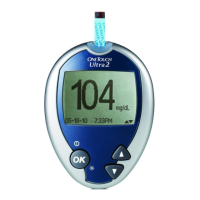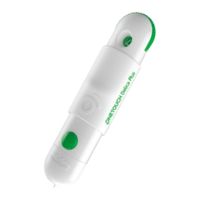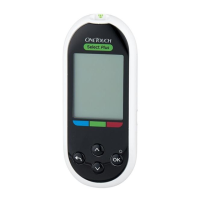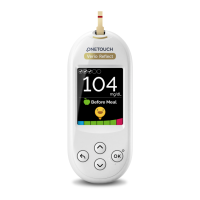26
TROUBLESHOOTING AND DETAILED INFORMATION ABOUT YOUR SYSTEM
Detailed information about your system
Comparing meter and laboratory results
Test results with the OneTouch® Ultra® 2 Meter are plasma-calibrated. This helps you and your health care professional to compare your meter
results with laboratory tests. If you have been using another type of meter—one that provides whole blood-calibrated results—you may
notice that your test results with the OneTouch® Ultra® 2 Meter are approximately 12% higher.
OneTouch® Ultra® 2 Meter test results and laboratory test results both are expressed in plasma-equivalent units. However, your meter result
may dier from your laboratory result due to normal variation. Meter results can be aected by factors and conditions that do not aect
laboratory results in the same way.
Your OneTouch® Ultra® 2 Meter glucose value is considered accurate when it is within ±20% of the laboratory measurement. There are some
specic situations that could cause a dierence of more than ±20%:
• You have eaten recently. The blood glucose level from blood obtained from a ngertip can be up to 70 mg/dL higher than blood drawn from a
vein (venous sample) used for a lab test.
1
• Your hematocrit (percentage of your blood that is red blood cells) is high (above 55%) or low (below 30%).
• You are severely dehydrated.
• You tested at a temperature near the low end of the operating range (43°F) and you get a high glucose result (i.e., greater than 180 mg/dL).
In this situation, repeat the test in a warmer environment with a new test strip as soon as possible.
For accuracy and precision data and for important information on limitations, see the insert that comes with your test strips.
1. Sacks, D.B.: “Carbohydrates.” Burtis, C.A., and Ashwood, E.R. (ed.), Tietz Textbook of Clinical Chemistry. Philadelphia: W.B. Saunders Company (1994), 959.
To maximize your chances of an accurate comparison between meter and laboratory results, follow a few basic guidelines:
Before going to the lab
• Perform a control solution test to make sure the meter is working properly.
• Do Not eat for at least eight hours before you test your blood.
• Take your meter with you to the lab.
While at the lab
• Conduct your meter test within 15 minutes of the lab test.
• Use only fresh, capillary blood obtained from the ngertip.
• Follow all instructions in this User Guide for performing a blood glucose test with your meter.
Message What it means What to do
No result in memory, such as the rst time use
of the meter
or,
your meter was unable to recall this result.
This result will not be included in result
averages.
You can still perform a blood glucose test
and get an accurate result. Contact LifeScan
Customer Service at 1 800 227-8862 (7 days a
week, 8 a.m. - 10 p.m. Eastern Time) to report
this occurrence, unless this is your rst use of
the meter.
Your meter was unable to recall this result.
This result will not be included in result
averages.
You can still perform a blood glucose test and
get an accurate result, but contact LifeScan
Customer Service at 1 800 227-8862 (7 days a
week, 8 a.m. - 10 p.m. Eastern Time) to report
this occurrence.
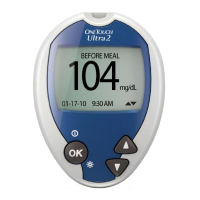
